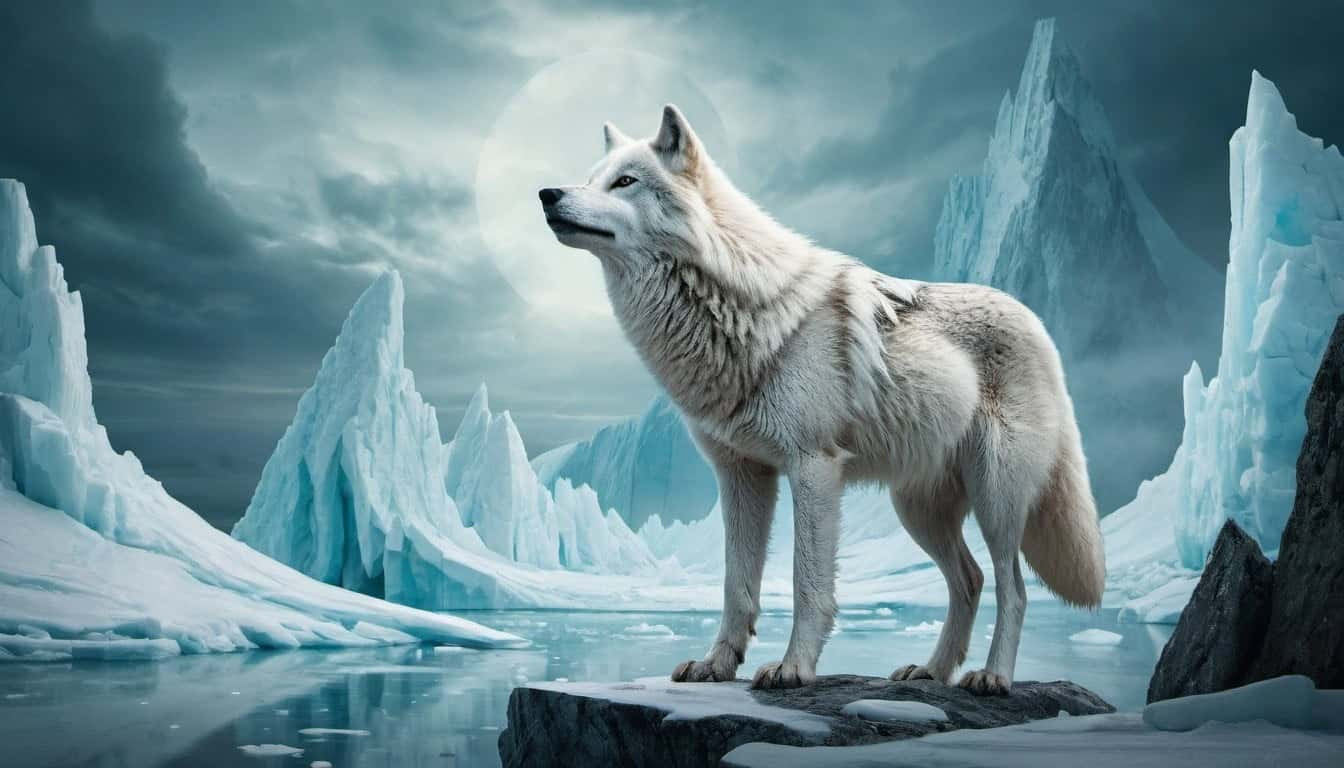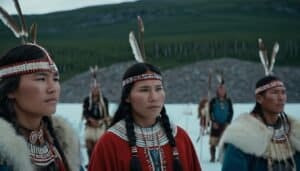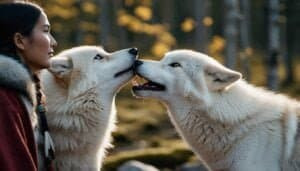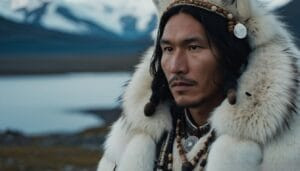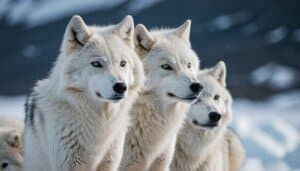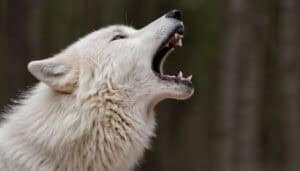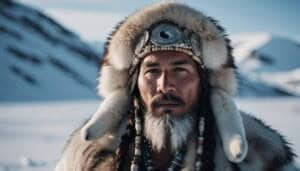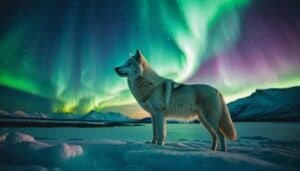Introduction
Arctic wolves hold a special place in the legends and myths of Arctic cultures, symbolizing strength, wisdom, and spiritual significance
This article explores the multifaceted representations of Arctic wolves in various legends and stories, delving into their symbolic meanings, historical context, and spiritual importance across different Arctic tribes
We will also uncover famous legends, examine the behavioral traits of Arctic wolves as depicted in myths, and highlight cultural rituals involving these majestic creatures. Finally, we will look at how modern Arctic cultures continue to preserve and celebrate these timeless myths
The Role of Arctic Wolves in Arctic Legends
Arctic wolves are prominent figures in the myths and legends of Arctic cultures, serving as powerful symbols of strength, resilience, and wisdom. These legends reflect the deep connection between the Arctic peoples and their harsh environment, where the Arctic wolf is often seen as a guardian and guide
This section delves into the symbolic meanings and interpretations of Arctic wolves, their historical context within Inuit myths, and their spiritual significance across various Arctic tribes
Symbolic Meanings and Interpretations
Arctic wolves in Arctic legends are frequently associated with qualities such as loyalty, endurance, and intelligence
They are depicted as both solitary wanderers and pack animals, embodying the balance between independence and community. In many stories, the Arctic wolf’s keen senses and survival skills are highlighted, symbolizing the need for awareness and adaptability in the Arctic environment
For example, in Inuit mythology, the Arctic wolf is often portrayed as a spirit animal that guides hunters and protects them from harm. This representation underscores the wolf’s role as a protector and a provider, vital in a landscape where survival depends on knowledge of the land and its creatures
The wolf’s ability to navigate the icy terrain and find food in the most challenging conditions makes it a revered figure, embodying the qualities that Arctic peoples value and strive to emulate
Historical Context in Inuit Myths
Inuit myths and legends often feature Arctic wolves as central characters. These stories are passed down through generations, serving as both entertainment and educational tools
One well-known Inuit legend tells the story of Amarok, a giant wolf that hunts alone and is feared by hunters who venture into the wilderness at night. Amarok is not just a literal predator but also a metaphor for the dangers that await those who do not respect the natural world and its rhythms
In other legends, Arctic wolves are depicted as wise beings that can communicate with humans. These stories often involve a wolf appearing in times of need, offering guidance or warnings. Such narratives highlight the deep respect and reverence Arctic cultures have for the wolf, seeing it as an equal or even superior being in terms of wisdom and understanding of the natural world
Spiritual Significance Across Arctic Tribes
The spiritual significance of Arctic wolves varies among different Arctic tribes, but common themes include the wolf as a totemic animal and a bridge between the physical and spiritual worlds
In some tribes, shamans are believed to possess the spirit of the wolf, granting them special powers and insights. This belief is reflected in rituals and ceremonies where wolf imagery and symbolism are prevalent
For example, the Iñupiat people view the Arctic wolf as a creature of great spiritual power. Stories tell of wolves that can traverse the boundaries between worlds, bringing messages from ancestors or spirits. This duality of the wolf as both a physical and spiritual entity makes it a key figure in many religious and cultural practices
In some Arctic communities, the Arctic wolf is also seen as a guardian spirit for the tribe. Totem poles and other artistic representations often include wolf figures, symbolizing protection and guidance for the community
These depictions are not just artistic expressions but also carry deep spiritual meanings, reflecting the integral role of the Arctic wolf in the cultural and spiritual life of these peoples
Famous Legends and Stories of Arctic Wolves
Arctic wolves are central to numerous legends and stories in Arctic cultures, each tale reflecting unique aspects of the environment, values, and beliefs of the people who tell them
This section will explore some of the most famous legends, the origin myths of Arctic wolves, the behavioral traits attributed to them in these stories, and notable wolf characters that have captured the imagination of Arctic peoples for generations
The Origin Myths of Arctic Wolves
Many Arctic cultures have origin myths that explain the existence and significance of Arctic wolves. These stories often intertwine with the creation of the world and the natural order. One prominent myth from the Inuit people tells of the first wolf, created by a deity to balance the ecosystem
According to the legend, the wolf was given the task of maintaining harmony between prey and predator, ensuring that no species would overpopulate and disrupt the fragile Arctic environment
In another legend, the Arctic wolf is born from the union of a human and a spirit animal. This story emphasizes the close relationship between humans and wolves, suggesting a shared destiny and mutual respect. The offspring, a powerful being with qualities of both worlds, becomes a protector of the tribe and a mediator between humans and the spirit world
Behavioral Traits in Mythology
The behavioral traits of Arctic wolves as depicted in myths highlight their intelligence, resourcefulness, and loyalty
These traits are not only admired but also serve as lessons for human behavior. For instance, many stories emphasize the wolf’s ability to work as a team to overcome challenges, mirroring the communal values of Arctic societies
One Inuit legend recounts how a pack of wolves saved a lost hunter during a blizzard. The wolves, through their teamwork and keen sense of direction, guided the hunter back to safety. This story is often told to children to teach the importance of cooperation, trust, and reliance on the natural instincts that can guide them in times of need
Another common theme is the wolf’s loyalty. Stories frequently depict wolves as loyal companions to humans, capable of deep bonds and unwavering support. In one myth, an Arctic wolf remains by the side of an elderly woman, helping her gather food and protect her from predators
This tale highlights the values of loyalty and care for the vulnerable, reinforcing the communal and protective instincts that are essential for survival in harsh environments
Notable Wolf Characters in Arctic Tales
Several Arctic wolf characters stand out in the rich tapestry of Arctic mythology. One of the most famous is Amarok, a gigantic wolf from Inuit mythology
Amarok is often portrayed as a solitary hunter, roaming the night and preying on those who venture out alone. Despite being a fearsome figure, Amarok also embodies the respect Arctic peoples have for the natural world’s dangers and the need to live in harmony with it
Another notable character is the White Wolf, a sacred figure in many Arctic tribes’ stories. The White Wolf is often depicted as a wise and benevolent leader, guiding lost souls and protecting the community from harm. This character is sometimes seen as an incarnation of a spirit or deity, further emphasizing the spiritual connection between the Arctic wolf and the human world
In some legends, wolves take on shapeshifting abilities, blending the boundaries between human and animal
These stories often involve a wolf transforming into a human to communicate important messages or to teach moral lessons. This shapeshifting ability signifies the deep connection and understanding between species, a theme that resonates strongly in Arctic cultures
Cultural and Ritualistic Aspects Involving Arctic Wolves
Arctic wolves are not only central figures in legends and stories but also play a significant role in the cultural and ritualistic practices of Arctic tribes
This section explores the various rituals and ceremonies involving Arctic wolves, their interactions with humans in myths, and how these traditions are preserved and celebrated in modern times
Rituals and Ceremonies
Arctic cultures have long revered Arctic wolves, incorporating them into numerous rituals and ceremonies
These practices often reflect the deep spiritual connection between the people and the natural world. In some tribes, the Arctic wolf is considered a totem animal, embodying the traits and virtues that the community seeks to emulate
One such ritual is the Wolf Dance, performed by several Arctic tribes to honor the spirit of the Arctic wolf and seek its guidance and protection. During the dance, participants wear wolf masks and costumes, imitating the movements and behavior of wolves. The dance serves as a form of spiritual communication, inviting the wolf spirit to bless the tribe with strength, wisdom, and unity
Another important ceremony is the Wolf Feast, held to celebrate a successful hunt or a significant communal event. During this feast, stories of legendary wolves are recounted, and offerings are made to honor the spirit of the wolf. This ceremony reinforces the bond between the community and the natural world, acknowledging the role of the wolf in their survival and well-being
Interactions with Humans in Myths
In many Arctic myths, Arctic wolves interact closely with humans, often serving as guides, protectors, or even adversaries. These interactions reflect the complex relationship between humans and wolves, highlighting themes of respect, cooperation, and mutual dependence
One common narrative is that of the wolf guide. In these stories, a lone traveler or lost hunter encounters a wolf that leads them to safety or provides crucial assistance. These tales emphasize the importance of trusting and respecting the wisdom of the natural world
For instance, an Inuit legend tells of a young boy who becomes lost in a snowstorm. A wolf appears and leads him back to his village, teaching him valuable lessons about survival and the interconnectedness of life
Another prevalent theme is the wolf as a protector. In these myths, wolves defend humans from threats, both natural and supernatural. For example, in a story from the Iñupiat people, a pack of wolves protects a village from a marauding bear. The wolves’ bravery and strength inspire the villagers to overcome their fears and unite against the common threat
Conversely, some myths portray wolves as challenges or tests for humans. In these stories, humans must demonstrate courage, wisdom, and respect to overcome the wolf’s challenge. These narratives serve as moral lessons, teaching the values of humility, perseverance, and reverence for nature
Preservation of Wolf Myths in Modern Times
Despite the modernization of many Arctic communities, the myths and legends of Arctic wolves continue to be preserved and celebrated. Efforts to maintain these cultural traditions are seen in various forms, including storytelling, art, and educational programs
Storytelling remains a vital tradition, with elders passing down wolf legends to younger generations. These stories are often shared during communal gatherings, festivals, and cultural events, ensuring that the rich heritage of Arctic wolf myths endures
Additionally, modern technology has enabled the recording and sharing of these stories, further preserving them for future generations
Artistic representations of Arctic wolves also play a crucial role in preserving these myths. Inuit carvings, paintings, and sculptures often depict wolves in various mythological contexts, celebrating their importance in Arctic culture. These artworks are not only cultural treasures but also serve as educational tools, teaching others about the significance of the Arctic wolf
Educational programs in schools and cultural centers help to keep the traditions alive. These programs often include lessons on the myths, legends, and cultural practices involving Arctic wolves, fostering a deeper understanding and appreciation among young people. By integrating traditional knowledge into the curriculum, these initiatives ensure that the cultural heritage of Arctic wolves remains vibrant and relevant
Conclusion
Arctic wolves are deeply ingrained in the legends and myths of Arctic cultures, symbolizing resilience, wisdom, and spiritual significance. Throughout this exploration, we have seen how Arctic wolves are portrayed in various roles within legends, reflecting the values and beliefs of Arctic peoples
From their symbolic meanings and historical context within Inuit myths to the famous legends and stories that highlight their behavioral traits, Arctic wolves have played pivotal roles in shaping cultural narratives
The cultural and ritualistic aspects of Arctic wolves reveal the profound spiritual connections that these communities have with the natural world. Rituals and ceremonies like the Wolf Dance and Wolf Feast underscore the respect and reverence Arctic tribes hold for the wolf spirit
Additionally, myths depicting interactions between humans and wolves emphasize themes of respect, cooperation, and mutual dependence
Despite the challenges of modernity, the preservation of these wolf myths continues through storytelling, art, and educational programs. These efforts ensure that the rich heritage and cultural significance of Arctic wolves remain vibrant for future generations
In sum, the Arctic wolf remains a powerful and enduring symbol in Arctic cultures, embodying the qualities and values essential for survival in the harsh Arctic environment. Through legends, myths, and cultural practices, the spirit of the Arctic wolf continues to inspire and guide the Arctic peoples
